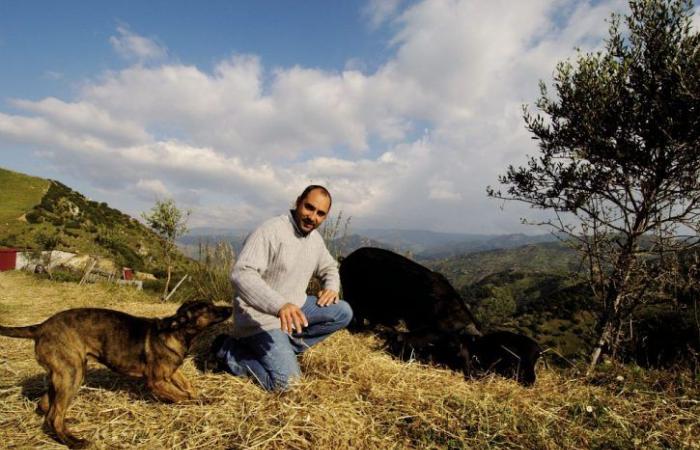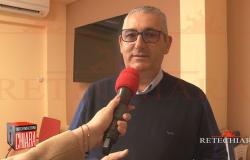The Locride area, in the metropolitan city of Reggio Calabria, is dotted with unique archaeological finds, such as the temple of Marasà, located on the site of Locri Epizefiri, an ancient city of Magna Graecia founded by populations from the Locride region. The first olive and vine plantations in the area date back to that era, spread by Hellenic customers.
Magnificent rocky bastions draw breathtaking views. Montalto, the highest peak of Aspromonte, resembles an octopus, whose tentacles are the rivers that cross its slopes.
The entire area is a treasure chest full of gastronomic riches of incomparable value. In the new episode of Terra dei Mari, the wine production of Greco di Bianco and Mantonico, the capicollo Azze Anca, the Caciocavallo and the thousand flavors of local honey are revealed.
Terra dei Mari, a project conceived, curated and created by Med Mediawith the contribution of Slow Food Italia, as part of the activities promoted by the Metropolitan City of Reggio Calabria on the occasion of the Terra Madre – Salone del Gusto 2020 edition.
Accompanying us in the discovery of the biodiversity of the territories are the hiking guides, the artisans, the chefs, but above all the farmers and producers who, together with Slow Food, contribute to safeguarding native techniques and varieties from extinction.
The wine treasures: Mantonico and Greco di Bianco
Mantonico means “wine of divinations”, its production dates back to approximately 2500 years ago; witnesses to the historicity of this wine are the millstones found in the Locria area: these are ancient stone machines that were built in the open air and used to press the grapes and ferment the must.
Flavio Latella, owner of the Dioscuri estate, produces Mantonico Locride Igp passito and Greco di Bianco Doc: «The Mantonico grains are very small and the bunch is dense, after vinification it returns an acidity and a tannin content which in taste can recall a red wine. As regards passito, it is necessary to be careful during the harvesting phase: the bunches are delicately placed in perforated boxes, taking care not to overlap them. Subsequently the boxes are stacked and arranged in a ventilated greenhouse, in this way the drying is uniform. Once dried, the bunches are taken to the cellar and vinified with the same procedure as a white wine. The yield is minimal, we are talking about around 35%.».
The Greco di Bianco Doc was established in 1980 and since then almost all families have a small production and make it at home. While Mantonico is produced along the entire Ionian coast, the distribution area of Greco di Bianco is limited to the municipalities of Bianco and Casignana (Reggio Calabria).
Both wines were offered to guests as delicious nectar, a ritual that testifies to the spirit of the natives: reserved but at the same time reaching out towards the customer in generous outbursts.
Also in this case we find a correspondence with the ancestors: Homer, in his Odyssey, often draws the reader’s attention to the value of hospitality for the Greeks who believed that every visitor could embody divinity and should therefore be welcomed with great warmth.
«Ours is a history of dominations that followed one another, have forged our character over time and made us shy; We also inherited great hospitality from our Greek predecessors» observes Natale Amato, founder of the environmentalist association “Right to Life”.
The Greek-style capicollo azze hip and the Ciminà caciocavallo
The Grecanica area or Bovesia, an area of the metropolitan city of Reggio Calabria which extends on the Ionian side, is characterized by two excellent products: the Capicollo azze anca Grecanico and the Caciocavallo di Ciminà, both Slow Food Presidiums.
The AgriRiggio company is a micro-reserve, Giuseppe and Francesco Riggio raise Calabrian black pigs on pasture and process the meat following the procedures handed down by butchers and Greek butchers. Francesco’s expert hands retrace the steps of product processing: the boned thigh is freed from the rind, divided and regularly massaged with salt for a few days. Legend has it that the quantity of salt was determined by the blowing of the winds: if there was a Bora the salt dried up and less had to be used, if the Scirocco blew it was wetter and the quantity could be increased. The capicollo is then seasoned with spices typical of the area (red chilli flakes, wild fennel and half-grained black pepper) and covered with a thin layer of fat which maintains its softness. This is followed by a quarterly maturation in rooms traditionally located in basements in rural areas.
The gastronomic combination of choice is with bergamot: the acidity and aroma of the ripe fruit create an interesting combination with the sweetness of the fat of the cured salami.
Bovesia was considered by the Greeks as a great food deposit; the capicollo, in fact, like other delicacies from the colonies, was preserved through the use of salt and brought to the motherland by sea.
Rocco Siciliano, president of the Caciocavallo di Ciminà producers’ association, tells us how the cheese of the same name was born. Active for four generations, his company includes 150 hectares, mainly dedicated to grazing and partly to fodder plants. The land extends up to the slopes of Mount Tre Pizzi, in that area the pastures are sunny and the slopes are gentle. The alternation of the seasons and the consequent variations in arable land affect the color and flavor of the milk: sulla, a spontaneous legume, makes it an intense yellow color due to the beta-carotene content.
Traditionally, caciocavallo was born as a cow’s cheese but in these areas there are historically many sheep, so, as regulated by the Presidium, it is possible to use both types of milk. The process is traditional: it is worked without the addition of industrial starters and without whey starter, this involves the need to observe the curd and test its consistency to understand when the right time to work it is; once ready you can start with the spinning: the dough is worked with the hands to give it the characteristic ovoid shape, it is then closed leaving the “flower”, a small appendage which will be used to hang the cheeses in pairs using a ribbon. This method of combining two wheels is linked to the times when the cheese was made directly in the stable and then taken to the markets: tied in pairs they could easily be hung on the shoulder and transported on horseback… hence the name caciocavallo!
Agriturismo Fattoria Armonia: in Stilo an oasis of peace for bees and visitors
Giorgio Scrivo, owner of Fattoria Armonia, in Stilo, talks about his bees as if they were his daughters: «Bees have an extraordinary organization, the lady queen has a coordinating role, not superior to other bees. Here each area has its own honey, in the mountains there is chestnut honey, in the seaside area in spring we have wildflower honey, then there is heather honey. We called our farmhouse Armonia because we want to offer an experience that enhances our territory, not just a holiday home».
The riches of this strip of Calabria overlooking the Ionian Sea are innumerable, a sea which, over the centuries, has brought together populations from different cultures. Man is often selfish and divisive with his peers, but nature takes care of creating the conditions for us to meet again.





